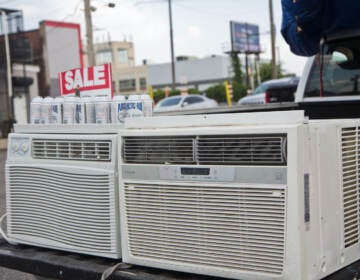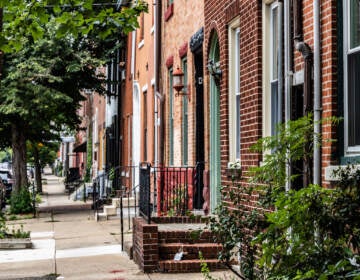Industrial waterfronts: Look on the bright side, ‘peakniks’ say
“Goodbye, greenways.”
That was just one of the nervous chuckles induced by writer Ben McGrath in his fascinating look at cheery “doomers” – loosely defined as post-oil, economic-collapse alarmists, but in a good way – in the Jan. 26 issue of The New Yorker, entitled “The Dystopians.”
Following all the optimism and hope from an extraordinary inauguration and the ensuing fast-paced First Seven Days in Office, the article is a sobering but somehow heartening read. It begins with Dmitry Orlov, a Soviet émigré living in a boat on a Boston marina. For him, the future of infrastructure will be waterways, not roads or bridges or light rail. After visiting Russia a few times and discovering “there were some peculiar advantages to his home country’s dysfunctionality,” Orlov recommends the kitchen garden over the bread line, if by land.
If by sea, or any waterway, wind undercuts diesel. Wind for sails, that is, not turbines. That’s his thinking behind plans for a trading network from Vermont to New York City, using Lake Champlain to deliver apples and maple syrup to farmers’ markets.
Too Birkenstock, maybe, but McGrath also interviews James Howard Kunstler, a name more familiar to the urban studies crowd – he is the author of 1993’s suburban sprawl treatise, “The Geography of Nowhere.” In 2005, Kunstler correctly predicted the subprime mortgage crisis by calling it a “worldwide pyramid racket.”
Of the houses and other buildings spawned from that sprawl, he has not much positive to say, McGrath writes: “The architectural criticism was inextricably linked to our national predicament, because in Kunstler’s view the American economy since the Second World War has essentially been one of continuous sprawl-building; made possible by cheap (but diminishing) energy sources, and, given what we’ve built, it amounts to ‘the greatest misallocation of resources in the history of the world.’ As long-term infrastructure, McMansion subdivisions and the big-box retailers that service them are only worth the scraps that can be salvaged by scavenging, he contends, and when oil stops allowing people to indulge the current fantasy, Bergen and Fairfield counties will become Hobbesian slums, highway strip malls will be recolonized by sumac trees, and the hulking sheds formerly known as Kmarts will be good for little more than Pentecostal roller rinks.”
Yikes. Talk about your “Re-imagining Cities: Urban Design After the Age of Oil.” That November conference at Penn featured a presenter with a healthy supply of gallows humor – Adil Najam, professor of international relations, geography and the environment at Boston University – who likened the entire planet to a third-world country, but his wisecracks came between PowerPoint slides. Kunstler, domestically speaking, kicks the dialogue up more than a notch or two. (Kunstler’s address at the annual TED Conference [technology, entertainment, design] from 2004 is one of the most-viewed of all the online TED lectures, and can be seen here: http://www.ted.com/index.php/talks/james_howard_kunstler_dissects_suburbia.html.)
To wit, McGrath explains Kunstler’s take on skyscrapers: “Their efficiencies may become nightmares in a blackout, as the elevators stop working. And when natural-gas reserves are depleted to levels at which pressure falters, the pipes will freeze and burst, the halls will flood, and offices and apartments will become instantly uninhabitable.
“Large cities will then need to decompress almost overnight, and reconcentrate along their waterways, which offer both potential power sources and shipping routes. The industrial zoning of riverfronts and canals was not an unfortunate accident. Or, put another way, [Brooklyn’s notoriously wretched] Gowanus Canal is a model of sustainable urbanism. Goodbye, greenways.”
I did say there were some heartening bits to the piece, didn’t I? You’ll have to take my word for it, since the full story (with other colorful characters) is available online only in abstract form (http://www.newyorker.com/reporting/2009/01/26/090126fa_fact_mcgrath). But you can listen to McGrath discuss the article via mp3 download here: http://www.newyorker.com/online/2009/01/26/090126on_audio_mcgrath.
McGrath says his subjects are part of “the Malthusian movement,” which has expanded “into some kind of peaknik diaspora. Peak oil and peak carbon (i.e., global warming) are the heavies.” Other contenders, less prominent, include “peak fish” and “peak dollars.”
All of these elements surfaced during that “After Oil” confab (http://www.planphilly.com/node/4227), so we’ll leave you on a more positive note, repeating the words of Judith Rodin, president of the Rockefeller Foundation (a co-sponsor of the conference) and the former Penn president, who dared attendees to act boldly, innovate, and to use “this opportunity and obligation to shape a new urban agenda.
“You are here because you are precisely the ones to sweat the details. Welcome to a most remarkable and crucially important dialogue.”
– Posted by Thomas J. Walsh
WHYY is your source for fact-based, in-depth journalism and information. As a nonprofit organization, we rely on financial support from readers like you. Please give today.






